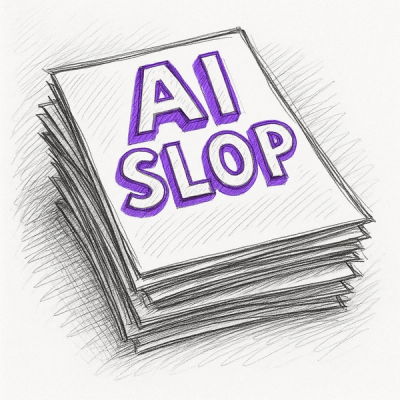
Security News
Django Joins curl in Pushing Back on AI Slop Security Reports
Django has updated its security policies to reject AI-generated vulnerability reports that include fabricated or unverifiable content.
github.com/mgmeier/purescript-webgl
Binding to WebGL for purescript.
This modules should be imported like:
import Control.Monad.Eff.WebGL as GL
import Graphics.WebGL as GL
import Graphics.WebGLTexture as GL
import Graphics.WebGLFramebuffer as GL
I started with generating the raw interface by parsing the Kronos IDL and generating a low level binding to Graphics.WebGLRaw. This can be found in the package purescript-webgl-generator. For some procedures the generation is not appropriate (e.g. ad-hoc polymorphism in Javascript or calling the same procedure with different number of arguments). I decided to copy these cases by hand and modify them, instead of making a super smart generator. All the constants are generated with a leading underscore, while all the procedures have a trailing underscore in this module. I insist on that this module should not be changed by hand. I suggest you don't call WebGLRaw directly, but expand the binding and provide patches if needed.
For vectors, matrices and bindings to JavaScript TypedArrays I constructed the packages purescript-vector, purescript-matrix and purescript-typedarray, which are prerequisites of this package.
The first n lessons form the page learningwebgl are ported to purescript in the repo purescript-webgl-examples.
I then constructed a slightly higher level interface in the modules Graphics.WebGL and Graphics.WebGLTexture. I hide the numeric constants behind ADT enums, which guarantee that you don't pick a value which is not allowed.
Start up by calling runWebGL with the canvas name to be used, an error handler and a continuation which takes a context with the canvas name and runs with the effect EffWebGL. This will fail if the browser does not support webgl.
runWebGL "glcanvas" (\s -> alert s)
\ context -> do
Then you need to define the fshader and vshader in the shader language as two strings. The Shaders constructor takes the two strings and has an additional phantom type, which defines the bindings between purescript and the graphic processor. E.g.:
shaders :: Shaders {aVertexPosition :: Attribute Vec3, uPMatrix :: Uniform Mat4, uMVMatrix:: Uniform Mat4}
shaders = Shaders
"""precision mediump float;
void main(void) {
gl_FragColor = vec4(1.0, 1.0, 1.0, 1.0);
}
"""
"""
attribute vec3 aVertexPosition;
uniform mat4 uMVMatrix;
uniform mat4 uPMatrix;
void main(void) {
gl_Position = uPMatrix * uMVMatrix * vec4(aVertexPosition, 1.0);
}
"""
Although type safety is guaranteed in the purescript world, currently the correctness of your types is not checked against the shading language definitions. Be careful as unused variables in the sahder code will be optimized away and the binding will not be correct then.
By calling
withShaders shaders (\s -> alert s)
\ bindings -> do
compile the shaders, and the returned bindings are a record, with a type that matches the shaders phantom type, plus an additional field, which holds the WebGlShaderProgram, which is needed for some procedures. So here is the withShaders type:
withShaders :: forall bindings eff a. Shaders (Object bindings) -> (String -> EffWebGL eff a) ->
({webGLProgram :: WebGLProg | bindings} -> EffWebGL eff a) -> EffWebGL eff a
You can then bind values to uniforms and make buffers and draw. This is just on a slightly higher leven then calling the original webgl procedures. Eg:
let pMatrix = M.makePerspective 45 (canvasWidth / canvasHeight) 0.1 100.0
setUniformFloats bindings.uPMatrix (M.toArray pMatrix)
let mvMatrix = M.translate (V.vec3 (-1.5) 0.0 (-7.0))
M.identity
setUniformFloats bindings.uMVMatrix (M.toArray mvMatrix)
buf1 <- makeBufferFloat [0.0, 1.0, 0.0,
(-1.0), (-1.0), 0.0,
1.0, (-1.0), 0.0]
drawArr TRIANGLES buf1 bindings.aVertexPosition
Textures are supported via the module Graphics.WebGLTexture. A texture can be created by:
texture2DFor "crate.gif" MIPMAP \texture -> do
The interface is not stable, but the basic constructs (effect, shaders) will not be dropped.
FAQs
Unknown package
Did you know?

Socket for GitHub automatically highlights issues in each pull request and monitors the health of all your open source dependencies. Discover the contents of your packages and block harmful activity before you install or update your dependencies.

Security News
Django has updated its security policies to reject AI-generated vulnerability reports that include fabricated or unverifiable content.

Security News
ECMAScript 2025 introduces Iterator Helpers, Set methods, JSON modules, and more in its latest spec update approved by Ecma in June 2025.

Security News
A new Node.js homepage button linking to paid support for EOL versions has sparked a heated discussion among contributors and the wider community.